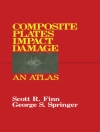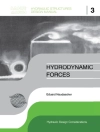This book focuses on the mathematical potential and computational efficiency of the Boundary Element Method (BEM) for modeling seismic wave propagation in either continuous or discrete inhomogeneous elastic/viscoelastic, isotropic/anisotropic media containing multiple cavities, cracks, inclusions and surface topography. BEM models may take into account the entire seismic wave path from the seismic source through the geological deposits all the way up to the local site under consideration.
The general presentation of the theoretical basis of elastodynamics for inhomogeneous and heterogeneous continua in the first part is followed by the analytical derivation of fundamental solutions and Green’s functions for the governing field equations by the usage of Fourier and Radon transforms. The numerical implementation of the BEM is for antiplane in the second part as well as for plane strain boundary value problems in the third part. Verification studies and parametric analysis appearthroughout the book, as do both recent references and seminal ones from the past.
Since the background of the authors is in solid mechanics and mathematical physics, the presented BEM formulations are valid for many areas such as civil engineering, geophysics, material science and all others concerning elastic wave propagation through inhomogeneous and heterogeneous media.
The material presented in this book is suitable for self-study. The book is written at a level suitable for advanced undergraduates or beginning graduate students in solid mechanics, computational mechanics and fracture mechanics.
Mục lục
Introduction.- Theoretical foundations.- Elastodynamic problem formulation.- Fundamental solutions.- Green’s function.- Free-field motion.- Time-harmonic wave propagation in inhomogeneous and heterogeneous regions: The anti-plane strain case.- The anti-pane strain wave motion.- Anti-plane strain wave motion in finite inhomogeneous media.- In plane wave motion in unbounded cracked inhomogeneous media.- Site effects in finite geologicall region due to wave path inhomogeneity.- Wave scattering in a laterally inhomogeneous, cracked poroelastic finite region.- Index.












